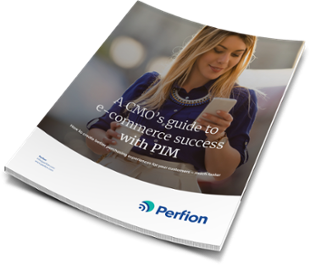
At the beginning of 2020, commerce was already on the cusp of mass digitization. However, this was accelerated following the many physical limitations and restrictions of that year. This increase in online traffic has made Product Information Management (PIM) crucial to keep up with demand.
PIM systems can act as a super brain or traffic controller in charge of complex data inputting, processing, categorizing, and disseminating. As social e-commerce and social shopping grows, PIMs have become industry non-negotiables.
What is Social E-Commerce?
Compared to more traditional e-commerce, social commerce refers to the process of selling directly on social media. There are more than 3.5 billion people on social media, and Statista reports that 48% have shopped on these platforms. An additional 5% of internet users have shown an interest in buying goods on social media in the future. With both large and small businesses joining the fray, Later estimates that the global social commerce market will be worth $604.5 billion by 2027. This is a huge jump from its current value of $89.4 billion. Given this prediction, how can PIM help further this industry?
|
A CMO's guide to e-commerce success with PIM |
What Benefits Do PIM systems Bring?
Efficient Flow of Data
Because the online selling world caters to millions at any given time, you can expect the data stream to be dense. Excel files, caches, and folders can easily build up and get confusing. To better manage this, PIM systems can act as a sorting device between supplier and consumer. Effectively, this will eliminate the need for you to manually collate and distribute information. A PIM system takes this a step further by also acting as a fact-checker as it cross-references and updates any new data across various mediums. This means all your supplier product sheets can be updated, while product postings on your social media accounts will also be edited accordingly – all from one central database. By streamlining this process, Perfion notes shorter product lead times can be expected.
Enriched Customer Experience
It’s important to remember that social selling can be a double-edged sword. Just as quickly as you can gain customers, you can also lose them should your customer service be lacking. In fact, an article on Fast Company points out that 49% of consumers unfollow a brand due to poor customer service, while 45% will avoid irrelevant content on the brand’s feed. With a PIM system, you can look to capture the 71% of consumers who are likely to recommend a brand after a positive social selling customer experience. Because 54% of consumers said they use social media to research products, having a PIM system can also ensure that your data is current and complete. By providing all the updated and necessary product and service information, customers are more inclined to believe your credibility which also leads to less returns.
Effective Omni-channel Data Distribution
Different social media channels have varying content specifications. With a PIM system, you can pick the content, data, and media assets that you want to post on any given social media site with less human intervention. This ensures that your online collaterals are at their most advantageous depending on the platform and audience, without having to eat up your team’s production time. PIM tools can also help you manage international audiences. A study of over 10,000 people in five countries published by Forbes, shows that online consumption is almost seven hours a day per person. Almost half of this time is spent on social media. This amounts to billions of prospective clients. Because you can’t be online 24/7, a PIM system can help you share relevant information no matter the time zone. The more accessible a brand is, the more likely a browser will convert into a customer.
Social selling is moving at light speed. If you try to join the current on your own, you’re likely to get swept away. By using a PIM system, you’re creating a customized data ship that will help you maneuver, troubleshoot, and forge your way ahead.
Download:
A CMO’s guide to e-commerce success with PIM
 In this guide, you learn how to create better purchasing experiences for your customers – much faster.
In this guide, you learn how to create better purchasing experiences for your customers – much faster.
